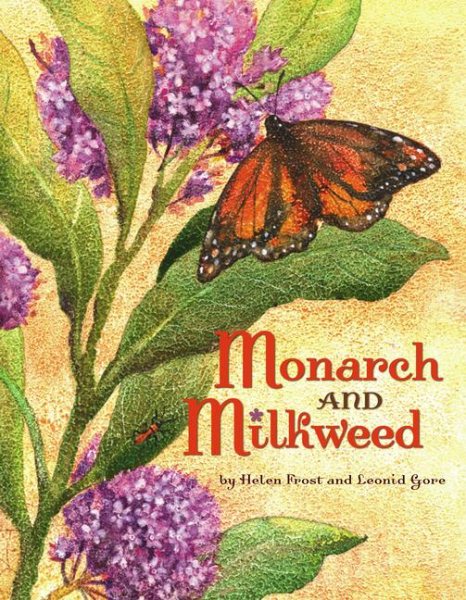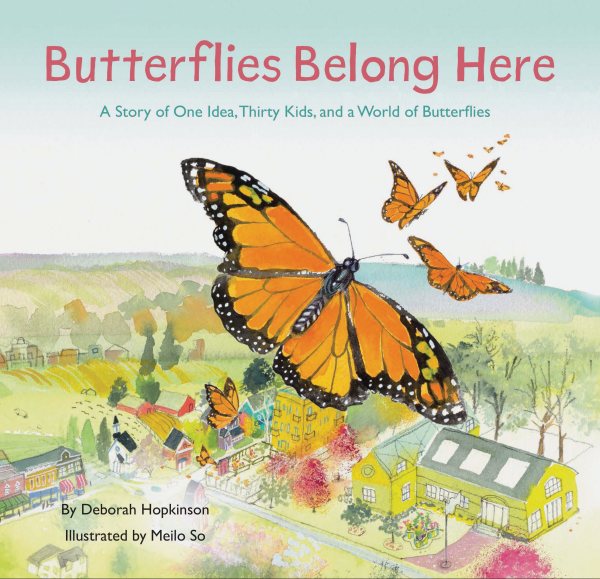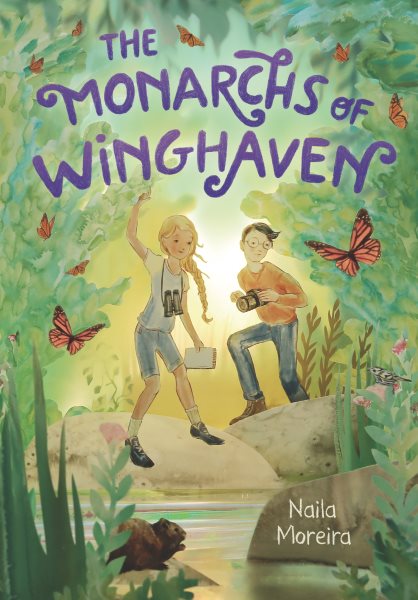Have you noticed the seed library on Fountaindale’s first floor? It has free seeds you can take home (and you don’t have to return them)! On different days, you might find vegetable, herb or flower seeds. Right now, as I write this, we have lots of milkweed seeds!
The caterpillars that become monarch butterflies eat only milkweed leaves. The number of monarch butterflies has gone down a lot in recent years, so many people are planting milkweed seeds to help the butterflies.
There are many kinds of milkweed. Three that you can usually find in the Chicago area are common milkweed, swamp milkweed and butterfly weed.
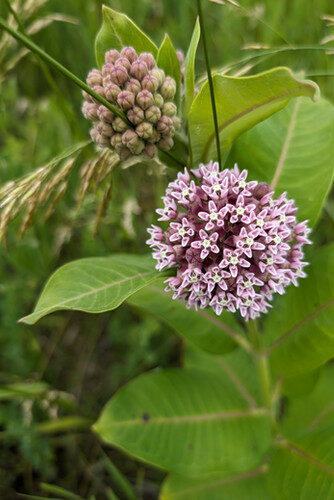
Common Milkweed (Asclepias syriaca)
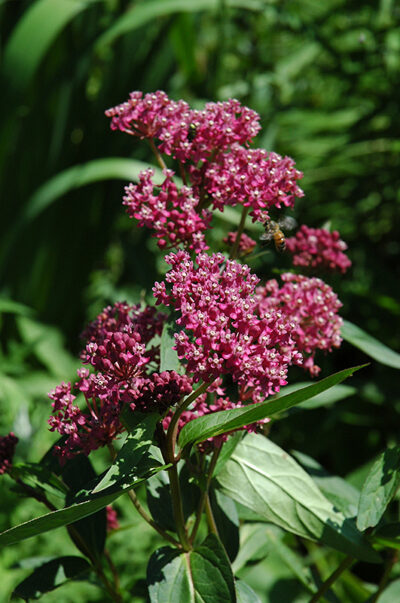
Swamp Milkweed (Asclepias incarnata)
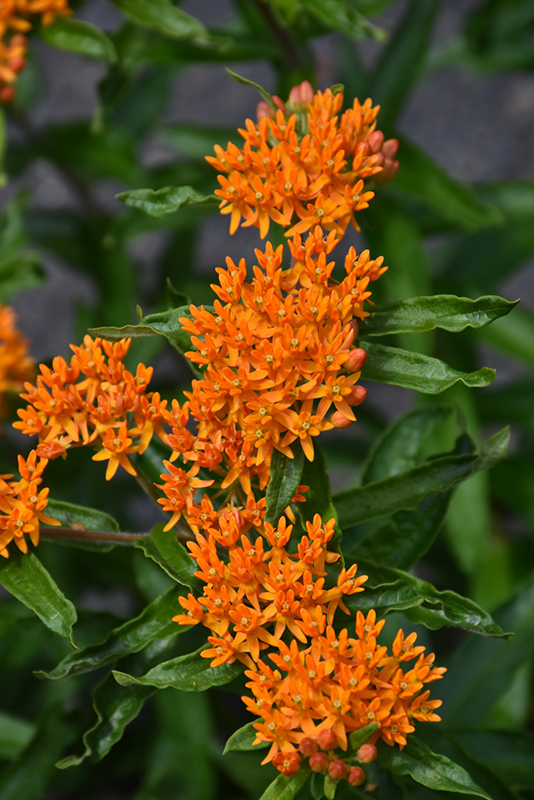
Butterfly Weed (Asclepias tuberosa)
The easiest time to plant milkweed is in the fall. When you sprinkle seeds on the ground then, all you need to do is watch for leaves the following spring.

Milkweed seedlings
If you are planting in the spring, then there are a couple of extra steps to take. The seeds need a signal that winter is over and it is safe to start growing. If the seeds have been sitting indoors all winter, that means that they need to spend time chilling as if they had been freezing outside.
I found instructions on the University of Illinois Extension website (although the exact page where I found them is no longer there). You will need a paper towel and a plastic bag, plus water and fridge space.
- Wet a paper towel and wring it out.
- Spread seeds on one half of the damp paper towel.
- Fold the empty half of the paper towel over the seeds to cover them.
- Put the seeds and paper towel inside a plastic bag.
- Keep the bag in the refrigerator for 4 to 6 weeks.
- You can plant the seeds once the danger of frost is over, around May 15.
Websites like Monarch Joint Venture, Monarch Watch and Wild Ones have more detailed information on creating a yard or garden that is butterfly-friendly. In addition to planting milkweed, some other steps you can take are planting flowers with nectar to feed adult butterflies and avoiding pesticides that can harm these insects.
If you’re trying to decide what kind of milkweed to plant and where to plant it, here are a couple of things to consider. All milkweed plants need plenty of sunlight. The big differences between common milkweed, swamp milkweed and butterfly weed are their height and the types of soil they like.
Common Milkweed (Asclepias syriaca)
This variety is the least fussy about its soil. This is the type that you are most likely to see in the wild and the type that is most likely to “volunteer” in your yard. In terms of looks, it is the tallest (typically 3 to 5 feet and up to 8 feet), but its flowers are not as brightly colored as swamp milkweed or butterfly weed. It blooms between May and August.
Swamp Milkweed (Asclepias incarnata)
As you would expect from the name, it likes damp soil most of the time. It is 2 to 5 feet tall and can have bright pink flowers. You can sometimes find plants for sale in garden centers. It blooms in late summer and early fall.
Butterfly Weed (Asclepias tuberosa)
This variety is much shorter than the other two at only 1 to 2 feet tall and has orange flowers. It likes well-drained sandy or loamy soil and it blooms between May and September. Seeds are relatively easy to find for sale.
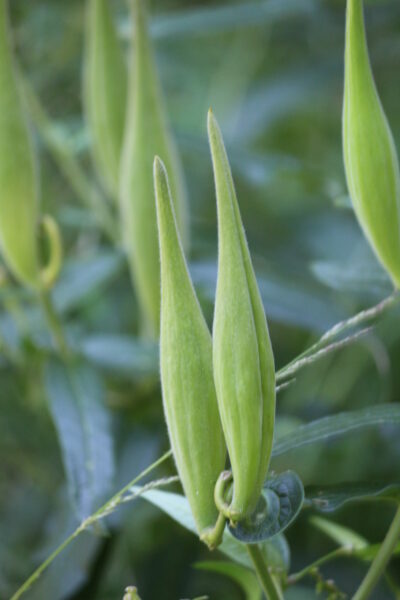
Butterfly milkweed pods are long and skinny, like this.
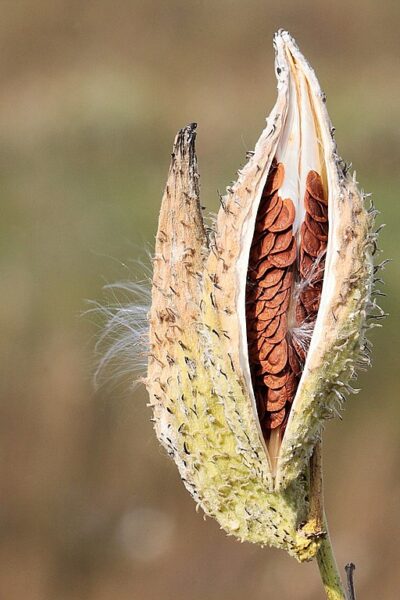
Seed pods for common milkweed are rounder, and ones you find outside this time of year have usually faded from green to gray:
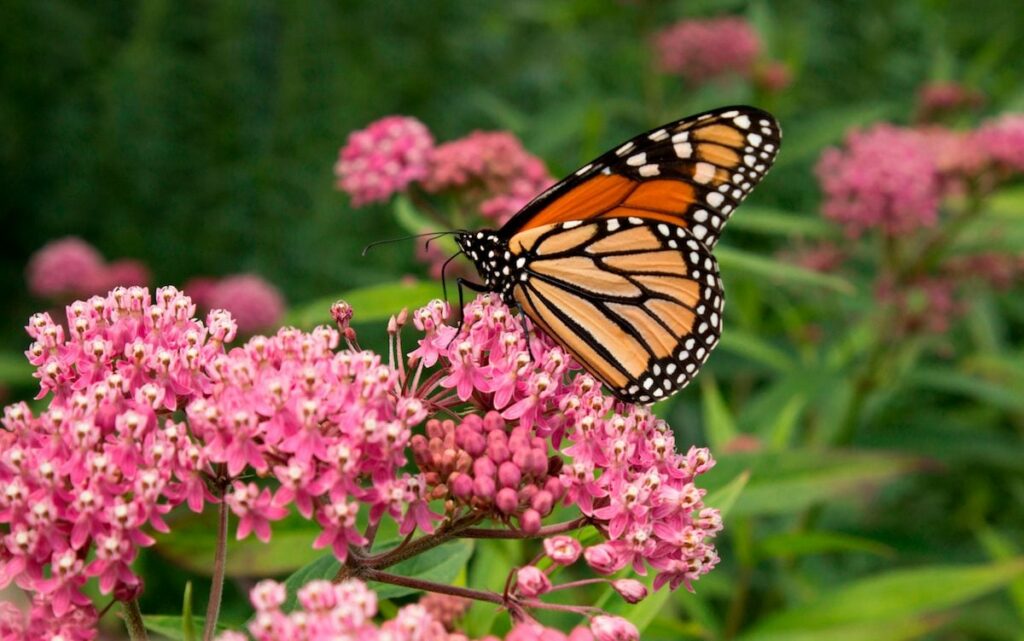
A monarch butterfly lands on a swamp milkweed plant
Books for Kids
We will also be happy to help you find gardening books or books on Caterpillars, Moths & Butterflies for kids of all ages!
Monarch and Milkweed by Helen Frost
This nonfiction picture book introduces the life cycle of a monarch butterfly, and how some parts of the life cycle require milkweed.
Butterflies Belong Here by Deborah Hopkinson
An immigrant girl explains how she learned English by reading about Monarch butterflies, and how, troubled by their decline, she got her classmates and neighbors together to build a butterfly garden. The book includes information on creating your own monarch way station.
The Monarchs of Winghaven by Naila Moreira
Young naturalist Sammie loves to do field research in a special stretch of wilderness in the suburbs—but now she must protect it. Science and heart combine in this engaging chapter book.

